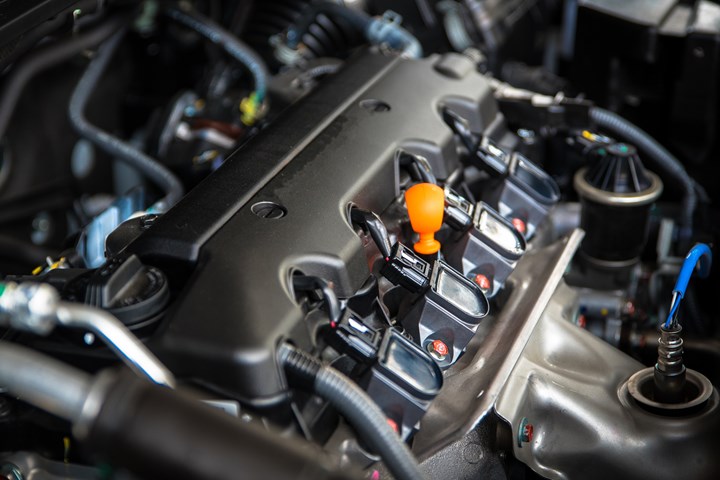Halogen-Free FR Glass-Reinforced Nylon 66 Compounds for Automotive, Appliance and Power Tool Housings and Electronic Devices
Teknor Apex’s new Creamid nylon 66 compounds make possible parts consolidations in applications with stringent mechanical & aesthetic requirements.
Three halogen-free, flame-retardant glass-reinforced nylon 66-based compounds with UL94 ratings of V0 newly available from Teknor Apex, Pawtucket, R.I.,reportedly offer high flow for injection molding, superior surface finish, and improved property retention in comparison with standard glass-filled FR nylon 66.
Creamid grades A3H7G3, C3H2G4, and C3H2G6 come in glass loadings of 15%, 20%, and 30%, respectively. Their non-halogen FR formulations make possible compliance with European RoHS and WEEE directives as well as internal OEM requirements. Teknor Apex recommends the compounds for applications such as appliance and power tool housings, electronic handheld devices, components for charging infrastructure for electric vehicles, and certain under-hood automotive components requiring FR properties.

Said commercial director for the ETP division Mike Anderson, “Teknor Apex has drawn on semi-aromatic nylon chemistry to enhance the ability of these compounds to retain tensile properties and stiffness upon exposure to moisture. The A3H7G3 product is currently in use for an automotive engine cover, having met an OEM specification for property retention after heat aging at 170 C/338 F.”
For the 20% glass-reinforced C3H2G4 grade, a comparison between dry-as-molded and conditioned properties shows notched Izod impact strength increasing from 7 to 10 KJ/m2; tensile strength decreasing from 125 to 85 MPa; elongation at break increasing from 3.0 to 3.4%; and tensile modulus decreasing from 8,300 to 5,500 MPa.
According to director of strategic initiatives Pratik Shah, these compounds enable engineers to meet increasingly stringent requirements for halogen-free FR formulations while also finding new ways to consolidate parts. “Included are grades with halide-free stabilization that are designed for sensitive electronic applications, where ion migration can lead to failures of the electronic components. We continue to expand our portfolio of FR products in nylons and other engineering plastics, such as PBT, PPA, and even PP, with several new grades in the final stages of commercialization. Our vision is to have a polymer-neutral approach and provide an optimized solution to the individual customer problems.”

Related Content
-
What's the Allowable Moisture Content in Nylons? It Depends: Part 2
Operating within guidelines from material suppliers can produce levels of polymer degradation. Get around it with better control over either the temperature of the melt or the barrel residence time.
-
Lanxess and DSM Engineering Materials Venture Launched as ‘Envalior’
This new global engineering materials contender combines Lanxess’ high-performance materials business with DSM’s engineering materials business.
-
General Polymers Thermoplastics to Further Expand Distribution Business
NPE2024: Following the company’s recent partnership buyout, new North American geographic territories are in its sight.














